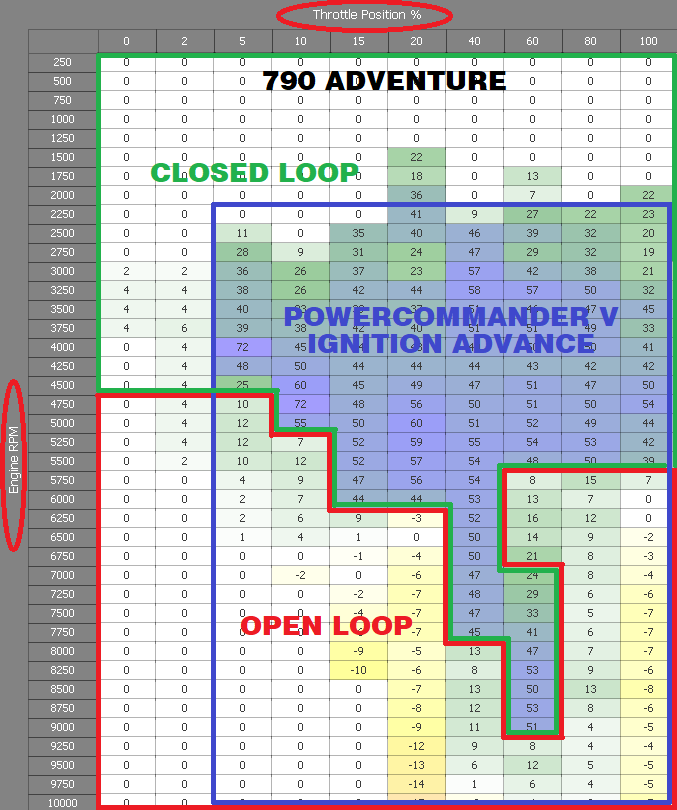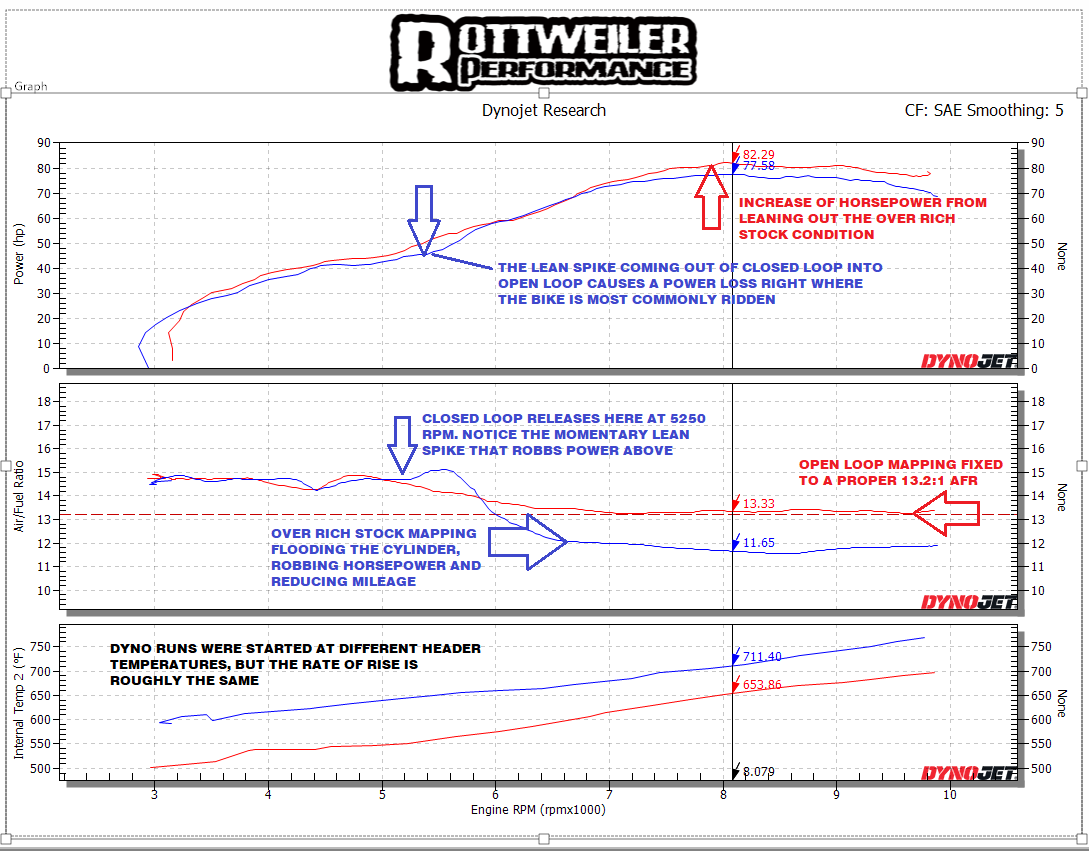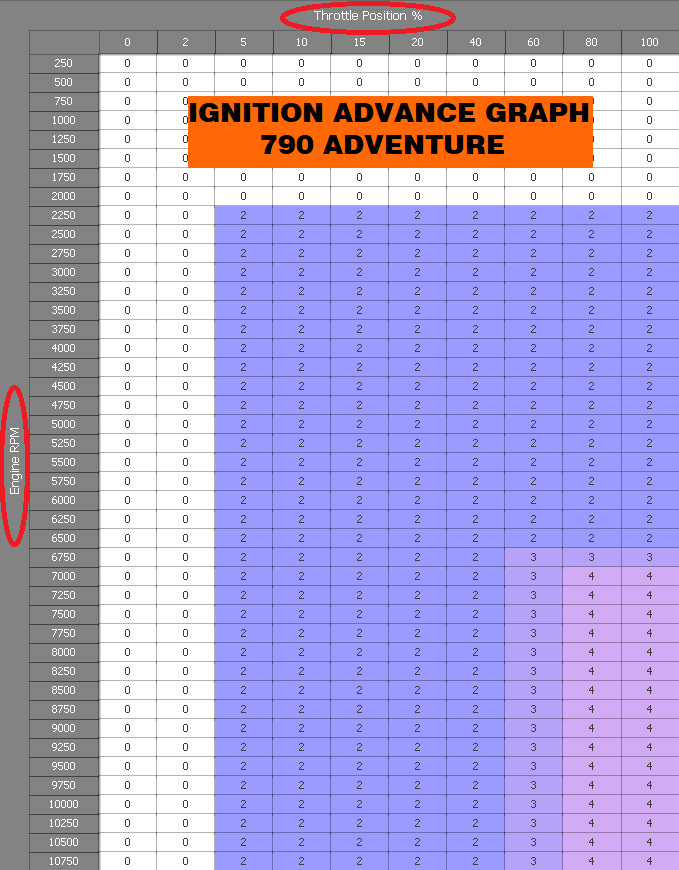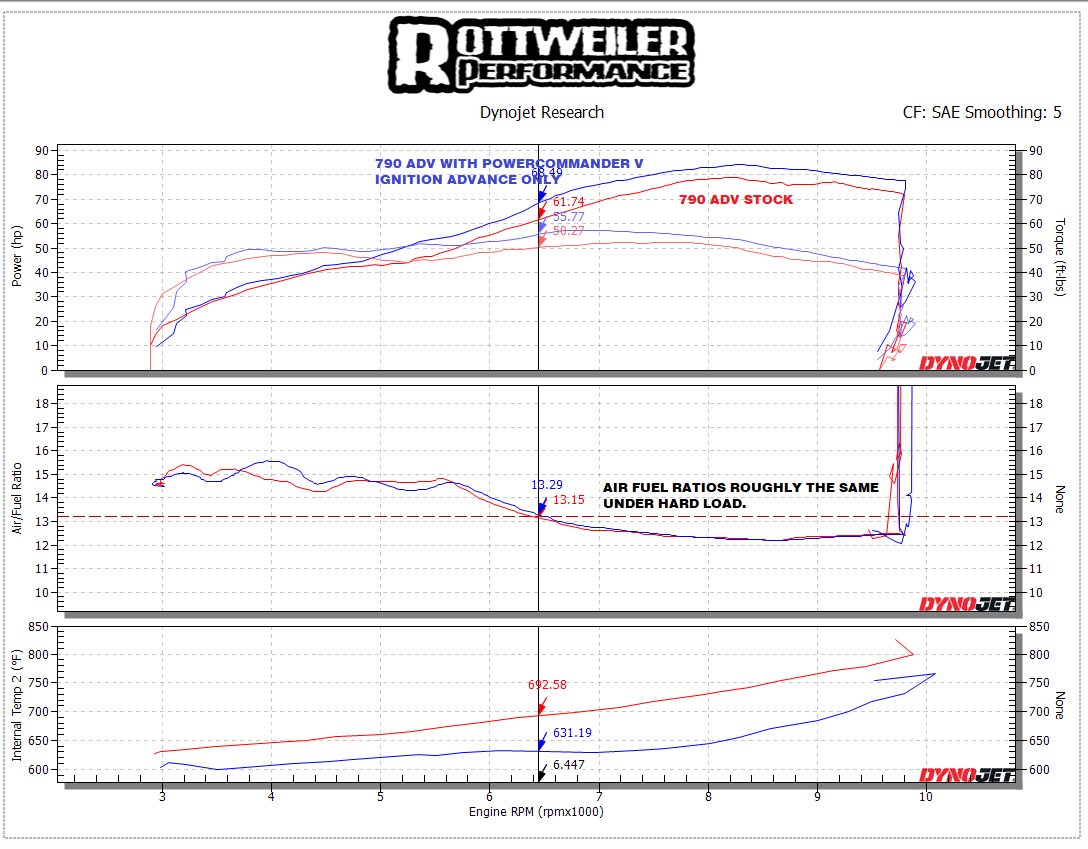790 DYNO FILES: IDENTIFYING CLOSED LOOP AND DEVELOPING MAPPING STRATEGIES TO EITHER WORK WITH IT OR AROUND IT.
Oct 16, 2019

Article Content Blocks
As we develop more tunes in the lab for these awesome new models, we thought it would be a fun and hopefully informative opportunity to share some methods we use to source out where the stock ECU has a lock on your fueling and where it doesn't, and develop street-legal maps around those areas so that we can not only provide RACE maps that cover the entire range, but also what we call STREET maps as well for those of you who wish to benefit from the power gains of an affordable aftermarket tuner like a Powercommander V, but stay compliant with sound, exhaust, and tuning regulations. Primarily we are addressing the 790 LC8c engines in this article.
If you already know what closed loop is or means, skip the next two paragraphs. If you want to know how your ECU (basically) works in regards to fueling the engine, read on and hopefully we can explain it in a way that makes sense along with the graphs we have included. Bottom line, if it weren't for ever expanding emissions regulations, you might possibly see more carburetors still on the market today. Not that they are better than fuel injection whatsoever in efficiency and power, but the switch to fuel injection can be a large contribution to the (also) ever expanding price tags of newer and newer models. The reason for which has been largely driven by emissions standards requiring real time tuning of certain portions of the map while the bike is in operation. This is where 'closed-loop' comes into play and it is where the powers that be at the emissions regulations offices say what part of your map needs to be compliant.
The term 'Close Loop' mainly identifies the portion of your map that is required to meet strict emissions standards and constantly try to keep the motorcycle at a stoichiometric air fuel ratio of 14.7:1 primarily using the narrow band O2 sensors to indicate what is happening after combustion in the cylinder. These are those little spark plug looking things in the header tubes with wires disappearing up into the abyss that is the web of wires in the middle of your bike. For simplicity, this section is largely driven by throttle position and RPM and on the 790 covers a much larger portion of the fuel map than many of the other models KTM offers, most likely due to new models having to struggle with the newer and very restrictive Euro 5 standards. Unfortunately for the rider, 14.7:1 AFR robs allot of potential horsepower, causes excessive heat and can make the engine run jerky and lean feeling.
On most other KTM models, closed-loop is primarily from 0-20% throttle and 0-5000 RPM but the 790 is much more expansive than ever, prompting some research as to where exactly it is lurking about before developing performance maps for our customers. In order to identify this, we must perform some creative digging and a dynamometer is an incredible tool for just this task if you know how to use one, (and have the space, bank account and means to own and operate one) and searching out closed-loop and where it has a grasp and where it doesn't is a bit like playing a game of Battleship (I think I just dated myself). You need to hunt around a bit and see where the hits and misses are.
Notice the image below and the deep blue/purple numbers. This is where Rocky (Our dyno) and Drago (your stock ECU) go head to head and fight each other for control of the mapping universe. Repeated runs at all throttle positions begin to sort of paint a picture of very large corrections that show up darker. The larger the number, the darker it gets for visual purposes. The large corrections are due to the dyno's wide band O2s doing everything they can to get the fuel mixture where it is optimal (13.2:1 AFR), and the stock ECU keeps leaning things out to a target of 14.7:1 AFR because of what it is sampling from the stock narrow band O2s. They will just keep fighting until one of them hits the wall and the other prevails, but in this case, we simply want to see where the large corrections continue to happen for development purposes and not mapping just yet. This was performed in multiple gears to ensure that closed loop did not change per gear. It was identical in 3rd, 4th and 5th.

The massive disparities between cells is a very clear indication of where closed-loop lurks about and comes to the end of its stranglehold, and then helps us develop a strategy to create performance maps around this portion of your map, but it doesn't end there. We have also found that many times when open-loop comes to an end and you transition into open loop (the part we can easily control and alter), that there is a momentary lean spike in the map, causing hesitation or a 'hole' in the power curve to the bike during that transition. Noting this we have developed special 'STREET' maps around this with a fueling strategy that smooths that hesitation out to nothing and makes better transitional power that you can see on the dyno. See the image below noting the lean spike and subsequent loss of power on the top graph. By creating special maps we can reduce this lean spike as shown on the red line in the middle graph. You can see just how much smoother that can be and how it improves horsepower shown in the top graph just after 5000 RPM.

The results of all of this are currently transitioning into maps that we offer for free with the purchase of a Powercommander V that can have dramatic and positive effects on how your engine runs as well as either staying compliant or when a full race tune is desired.
In the case of STREET maps, we can still see large benefits from ignition advance alone (see images below) which increases power even from within closed-loop and makes even better fuel economy due to more power using the same amount of fuel. These ignition advances are completely controllable if premium fuel is not an option and can be deleted in about 5 minutes with a computer and the PCV software. Typically bikes come with the ignition slightly retarded due to unknown fuel types being used but if premium fuel is available, they are not remotely harmful.


More on race tunes for this engine as they are developed.


